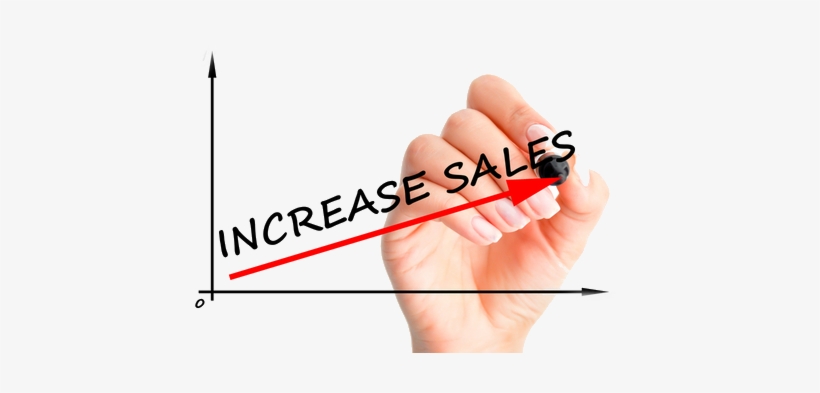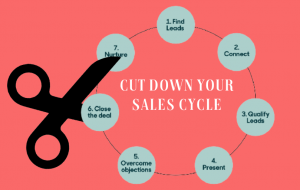Sales conversion rate is one of the key metrics that companies should monitor. It evaluates the efficiency of the entire business process, from the quality of lead prospecting to the adherence of the value proposition.
Working with optimized conversion rates has a direct impact on reducing costs for acquiring new customers, resulting in higher profit margins. That’s why it’s so important to look at this indicator.
An analytical look at the conversion rate allows you to identify where the bottlenecks of the business process are and take the necessary actions to correct them and increase sales.
If the company loses many leads in the proposal phase, for example, hiring more sellers or investing in increased prospecting will not necessarily result in performance improvement. On the contrary, such actions may even reduce the company’s margins and decrease the competitiveness of the business.
But before we talk about analysis and optimization, let’s clarify what it is and how to calculate the conversion rate in the context of B2B consultative sales.
What is the conversion rate?
In general, the conversion rate represents the percentage of people who have moved from one stage to another of the purchase journey.
In e-commerce, for example, we can calculate the conversion rate of site visitors into sales. We can also deepen the analysis, measuring the conversion rate in sales by origin of visitors, in order to understand which channels and capture actions promoted by marketing are being more efficient.
In B2B consultative sales, however, hardly a sale begins and ends in the digital environment without human involvement. The shopping journey in this market is usually longer and involves several steps that sometimes start online and end at a trading table with several involved.
In this scenario, the conversion rate will reflect the complexity of the sales funnel and the efficiency of the business process phase by phase of the funnel. Thus, we will have the total conversion rate, from leads to sales, and also the conversion of leads into opportunities, opportunities into proposals, proposals into sales and the more the steps of the funnel.
The richness of the indicator is to bring out the possible bottlenecks at each stage in order to solve problems and potentiate what is working.
In addition, the conversion rate allows for greater assertiveness in sales planning. Once the total conversion rate of the funnel is known, you can calculate how many leads are required to achieve the stipulated billing goals and thus direct prospecting.
How to calculate sales conversion rate
The formula for calculating the conversion rate is relatively simple. Simply divide the number of conversions in a given period by the source number and multiply by 100 to have the result in percentage:
- Conversion rate of visits to leads: leads ÷ visits x 100
- Lead-to-opportunity conversion rate: ÷ leads x 100
- Conversion rate of opportunities into proposals: proposals ÷ opportunities x 100
- Conversion rate of opportunities to sales: sales ÷ opportunities x 100
- Lead-to-sales conversion rate: sales ÷ leads x 100
Imagine a company that in a given month generated 24 proposals and closed 6 sales. The conversion rate of proposals into sales was 6 ÷ 24 x 100 = 25%.
This same company worked a total of 150 leads in the month. Thus, the conversion rate of leads into proposals was 24 ÷ 150 x 100 = 16%.
And the conversion rate of leads into sales was 6 ÷ 150 x 100 = 4%.
How to know, however, if 4% conversion to sales is a good or bad rate?
There is no simple answer to that question. This is because there are many factors that influence the metric, such as the market and economic situation. The way to answer this question is to compare the indicator with historical references of the business itself and also with results obtained by other companies in the same segment.
As you can see, the difficulty of calculating the conversion rate is not in the calculation itself. The biggest challenge is getting the data. Therefore, it is important to have a good CRM system that is correctly updated by the sales team so that sales information is recorded at each stage of the funnel.
6 strategies to increase sales conversion rate
An optimized conversion rate helps reduce customer acquisition cost and maintain business competitiveness.
To improve the conversion rate, however, it is no use looking only at sales at the bottom of the funnel. It is necessary to consider all the stages of the business process, starting with prospecting and qualification of leads.
Next, we list the six main strategies for increasing conversion rate and improving business process efficiency in complex B2B sales companies.
1- Determine the ICP
The first step to getting good conversion rates is to aim at the right prospect. That is, to target the potential customer who has a pain that your company can solve, that recognizes the value of your solution and that has the authority and purchasing power to purchase your product or service.
Once this ideal customer profile (ICP) is identified, all communication, capture and negotiation efforts should be directed to that specific audience, increasing the chances that people entering the sales funnel will become customers at the end of the purchase journey.
2- Structure the sales funnel
Another important point is to understand the purchase journey and structure the steps of the sales funnel consistent with this process. Only then will it be possible to measure and analyze conversion rates in each of the funnel steps.
The closer the sales funnel is to the actual steps a lead takes from the beginning of the journey to becoming a customer, the more accurate the control and visibility of the business process will be.
3- Plan lead prospecting
Recurring lead generation is essential to keep sales flow active. Once the ICP is determined, structure processes to prospect the leads needed to achieve the desired sales results.
You can both work with active outbound lead prospecting and have professionals dedicated to seeking and capturing the contact of prospects in the market, as well as developing Inbound strategies to attract the desired profile to the business.
Depending on the ICP profile, the desired lead volume, and the internal structure of the company, you can opt for one process or another, or work inbound and outbound together.
4- Qualify opportunities
Having good sales conversion rates requires optimizing all business process activities, including seller productivity and assertiveness.
Ideally, sellers spend most of their working time selling effectively. For this to be possible, it is necessary to subsidize the work of these professionals with a pre-sales team, or SDRs,dedicated to qualifying the opportunities generated by the prospecting process.
More than validating whether the prospect has the ideal customer profile, the SDR needs to talk to the prospect and understand if he is at the right time of purchase and willing to move on to the next step of the funnel.
With this pre-sales job,sellers stop wasting time with leads that are not yet mature for closing and start working opportunities that are more likely to convert into customers.
5- Craft a Sales Playbook
For the sales process to work in a disciplined manner and achieve the desired results and conversion rates, all professionals involved need to be clear about their roles and responsibilities.
The best way to perform this internal alignment is by documenting the steps and activities involved in the business process in a Sales Playbook.
The document will serve as a guide for day-to-day activities, including instructing on tactics and arguments to circumvent objections that may appear during trading.
The playbook will also help speed up the learning process and shorten the ramp up period of new team members, avoiding operational slowdowns for prolonged times.
6- Monitor and analyze sales funnel metrics
The conversion rate of the sales funnel needs to be monitored periodically. Try to identify the bottlenecks of the funnel and understand the possible reasons for the problems.
If the conversion of leads into opportunities is low, the focus of prospecting or the communication of the company’s value proposition may be misdirected.
If the bid closing rate falls short of what you want, note that the offer is competitive with the market and if the sales team is following the trades accordingly, with the proper follow ups.
Also be aware of operational indicators and any behavior of the sales funnel that may indicate problems,such as the amount of business at each phase of the funnel and the length of stay in the steps. Monitor the number of daily contacts, sales cycle duration, and conversations required to close a trade.
Spend some time understanding your sales process, promote improvement actions to fix the identified failures, and monitor the effects of the changes. The effort will be offset by better conversion rates and increased profitability.




